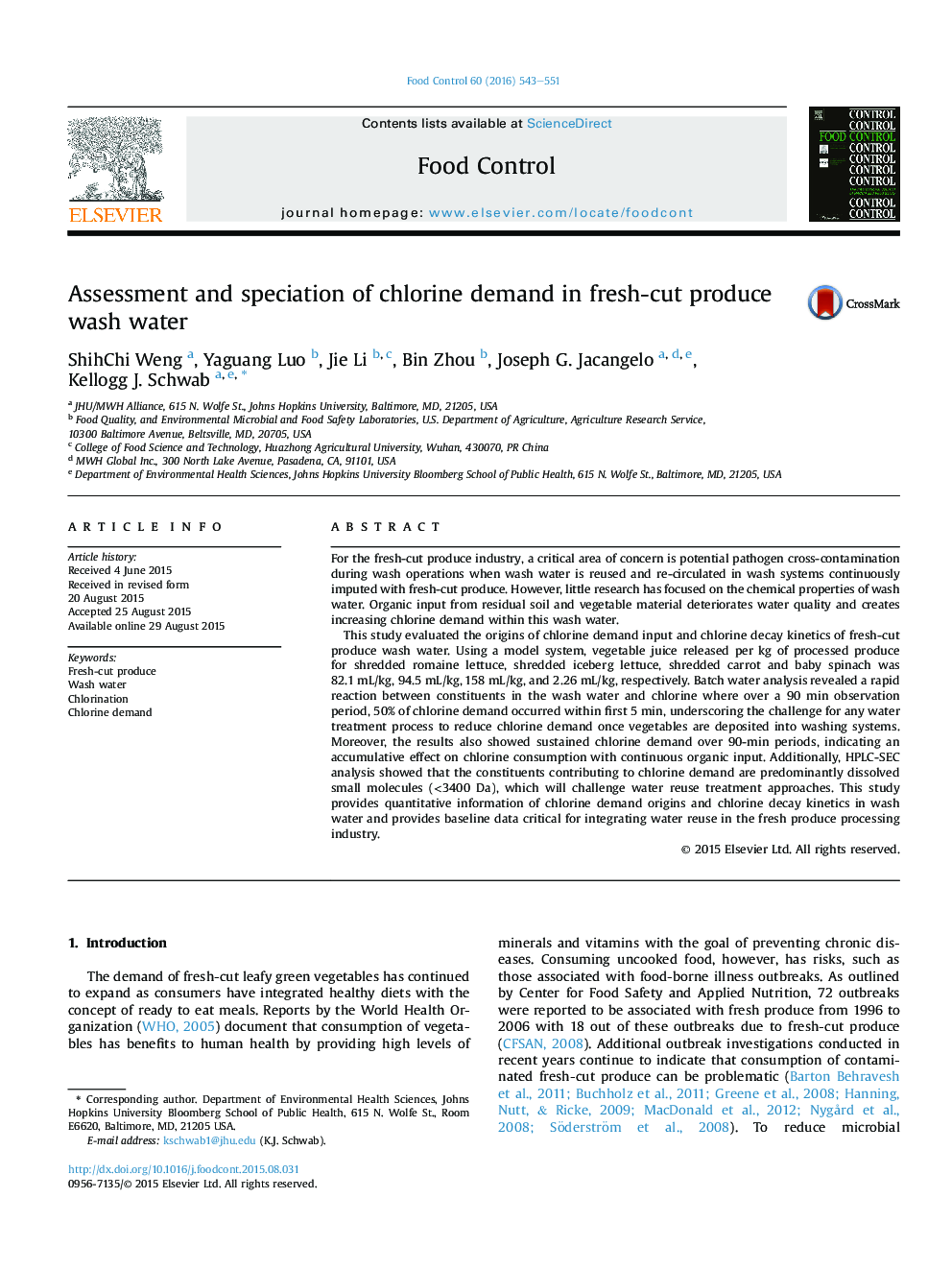| Article ID | Journal | Published Year | Pages | File Type |
|---|---|---|---|---|
| 6390343 | Food Control | 2016 | 9 Pages |
Abstract
This study evaluated the origins of chlorine demand input and chlorine decay kinetics of fresh-cut produce wash water. Using a model system, vegetable juice released per kg of processed produce for shredded romaine lettuce, shredded iceberg lettuce, shredded carrot and baby spinach was 82.1 mL/kg, 94.5 mL/kg, 158 mL/kg, and 2.26 mL/kg, respectively. Batch water analysis revealed a rapid reaction between constituents in the wash water and chlorine where over a 90 min observation period, 50% of chlorine demand occurred within first 5 min, underscoring the challenge for any water treatment process to reduce chlorine demand once vegetables are deposited into washing systems. Moreover, the results also showed sustained chlorine demand over 90-min periods, indicating an accumulative effect on chlorine consumption with continuous organic input. Additionally, HPLC-SEC analysis showed that the constituents contributing to chlorine demand are predominantly dissolved small molecules (<3400 Da), which will challenge water reuse treatment approaches. This study provides quantitative information of chlorine demand origins and chlorine decay kinetics in wash water and provides baseline data critical for integrating water reuse in the fresh produce processing industry.
Related Topics
Life Sciences
Agricultural and Biological Sciences
Food Science
Authors
ShihChi Weng, Yaguang Luo, Jie Li, Bin Zhou, Joseph G. Jacangelo, Kellogg J. Schwab,
